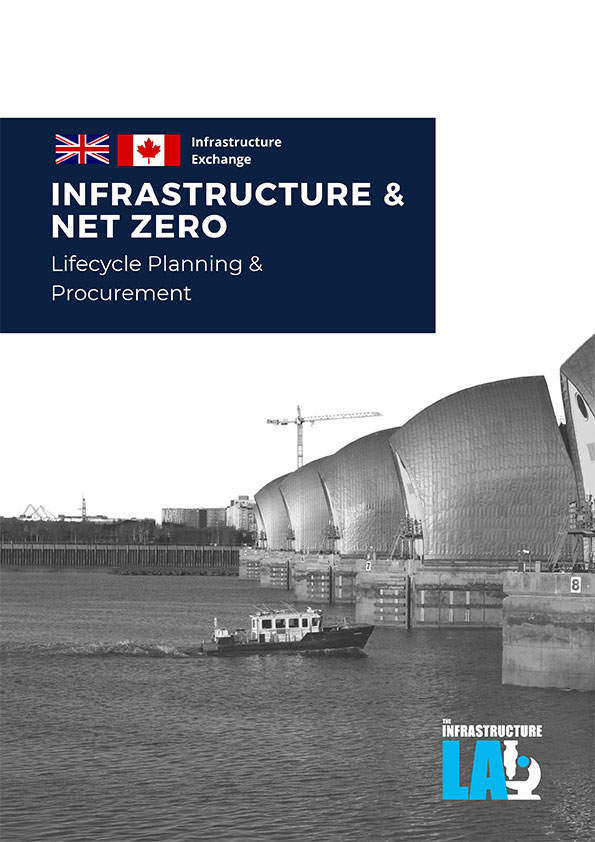Lifecycle Planning and Procurement
Published September 13, 2021
IMAGE CREDIT: cktravels.com / Shutterstock.com
Canada and the UK have both set out a legally binding commitment that requires both countries to reach net zero greenhouse gas emissions by 2050. Not only is this being positioned as a measure to protect the environment, but it also presents opportunities for economic growth and jobs. For both countries infrastructure was placed at the heart of that journey as a major emitter and enabler of change.
Five months after the net zero legislation was passed into law, the UK released its first ever National Infrastructure Strategy with a focus on leveling up the national economy and putting the UK on the path to achieve net zero emissions by 2050. Power, heat, and transport are responsible for over two-thirds of the UK’s emissions and the strategy lays out a multipronged approach that looks at developing different energy sources, and decarbonizing transport. The strategy came off the back of an analysis of the UK’s long-term infrastructure needs through the National Infrastructure Assessment, something that Canada is embarking on.
Canada and the UK have much in common with a focus on expanding renewables, developing advanced small modular reactors, developing carbon capture and storage and hydrogen, and investing in charging infrastructure. Like Canada the UK is also investing heavily in rail and urban transit, as well as broadband rollout which has proved to be such a critical asset in recent months.
The UK also borrowed an idea from Canada with the UK government committing to establish an infrastructure bank. The Canada Infrastructure Bank is now at the forefront of national efforts to support the economic recovery from COVID-19 with a $12 billion Growth Plan that also makes a strong contribution to reducing emissions through investments in clean power, zero emissions buses, energy efficient buildings, broadband, and agricultural infrastructure. The UK also named Canadian Mark Carney as the Prime Minister’s Finance Adviser in the run up to COP 26 to help encourage the financial services sector to play a bigger role in the transition to a net zero economy.
Key Themes
- From cost to value: UK government and industry have worked together to help shift mindsets and provide set processes with the development of the Construction Playbook and Value Toolkit.
- Defining value: Incorporating whole life costs is a start as well as looking at economic, social and environmental impacts. There are standards like ICMS 2 and PAS 2080 to help directly compare those costs and measure carbon.
- Government vision: An overall vision helps drive change with examples like Canada’s Greening Government Strategy and Scotland’s National Performance Framework focusing plans and overcoming siloed thinking.
- Project assessment: The UK developed a project scorecard to assess projects against policy priorities, and Scotland uses a Common Investment Hierarchy. It is also important to look holistically at wider social and environmental benefits.
- Planning and design: Design can reduce energy consumption though use of natural light and shading, better airflow, and materials used. It also reduces lifetime emissions by looking at how one asset fits in overall systems
- Procurement approaches: Procurement models and evaluation play an important role in driving market behaviour. This starts with looking at evaluation criteria including whole life costs and using a range of procurement models best suited for each asset type.
- Funding and financing: Many institutional investors are seeking opportunities with strong environmental and social credentials with infrastructure banks playing an important role in attracting private finance.

